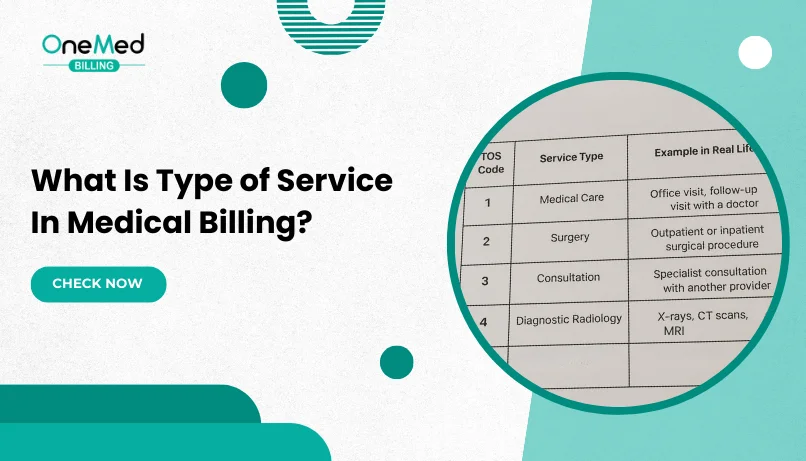The Impact of Incorrect Coding on Your Revenue Cycle
- July 24, 2025
- 0 Comments
- Revenue Cycle Management
When it comes to medical billing, every code matters. One wrong code can mean weeks of payment delays, claim denials, or even money lost forever. While coding might seem like a small part of your billing process, it has a big impact on how quickly you get paid and how much.
How Incorrect Coding Hurts Your Revenue Cycle
Medical coding might seem like just another step in the billing process, but it plays a major role in whether your practice gets paid fully and on time. Each code tells the story of what service was provided and why it was necessary. If the code is incorrect, incomplete, or mismatched, your payment gets delayed or denied. And when these mistakes keep happening, they create bigger problems for your revenue cycle and your team.
In this blog, you’ll learn how coding errors directly impact your income, where mistakes often happen, and how you can fix them before they slow your practice down.
1. Delayed Payments
Submitting a claim with the wrong code is one of the most common causes of payment delays. When insurance companies find an issue like a missing modifier or a code that doesn’t match the diagnosis, they hold the claim instead of processing it.
Here’s what happens next:
- Your billing team has to stop their routine work and figure out what went wrong.
- They’ll need to review the documentation, make corrections, and resubmit the claim.
- Every correction means more waiting time, and in the meantime, your practice goes unpaid for that service.
Real-life example: A minor surgery code didn’t match the documented diagnosis. This one mismatch caused the insurance to delay the payment by 45 days, disrupting the practice’s cash flow and putting pressure on staff to follow up multiple times.
2. Claim Denials and Write-Offs
Some coding errors don’t just delay payments; they result in outright claim denials. If your team misses the error, or if the correction isn’t submitted before the payer’s deadline, the claim might never be paid.
This creates two tough outcomes:
- You may have to write off the amount as a financial loss.
- Or worse, you might try to bill the patient for the full cost, which can damage your relationship and lead to complaints or non-payment.
Over time, even a small number of denied claims can add up to thousands of dollars lost each month. These write-offs cut into your profits and make it harder to meet operational expenses.
3. Wasted Time on Corrections
Fixing mistakes in submitted claims takes a lot of time, especially when your staff is already juggling new claims, payment posting, and patient billing.
To correct a single coding error, your team might need to:
- Dig through old charts and visit notes
- Ask the provider for clarification
- Adjust the codes in your billing system
- Refile the claim with the insurer
- Follow up by phone or portal to confirm receipt
This manual process pulls your billing team away from more productive tasks, such as submitting clean claims on time or following up on legitimate denials. Over time, repeated corrections cause backlogs, slow your revenue cycle, and frustrate staff.
4. Risk of Getting Audited
Frequent coding errors can raise red flags with payers, especially Medicare and large private insurers. When a practice submits too many questionable claims or shows a pattern of billing mistakes, it can trigger a payer audit.
Audits can be:
- Time-consuming: Your staff will have to pull records, organize documentation, and respond to multiple requests from auditors.
- Expensive: If the payer finds issues, they might ask you to return previously paid amounts or face penalties.
- Stressful: Even honest coding mistakes can damage your reputation if they happen too often or look like intentional overbilling.
The best way to avoid audits is to stay proactive, spot mistakes early, correct patterns, and train your staff on proper documentation and code selection.
5. Poor Cash Flow
Every denied or delayed claim affects your cash flow. And when coding errors happen often, your income becomes unpredictable. That makes it harder to plan ahead or manage your day-to-day expenses.
Here’s how cash flow problems affect your practice:
- You may struggle to pay staff on time or approve overtime when needed.
- It becomes difficult to invest in new equipment, software, or office improvements.
- Your ability to hire, expand services, or keep up with costs like rent and supplies is reduced.
Inconsistent income leads to financial stress for you, your team, and your patients. And it all starts with a few incorrect codes.
Common Coding Mistakes to Watch Out For
Even small coding errors can lead to denied claims, delayed payments, and extra work for your billing staff. Most of these mistakes are preventable when you know what to look for. Here are the most common ones and why they matter:
Wrong diagnosis code
This happens when the diagnosis code doesn’t match the condition that was actually treated or documented. Insurance companies use this code to confirm that the service was medically necessary. If the diagnosis and procedure don’t match, the claim will be flagged or denied.
Example: A patient receives physical therapy for back pain, but the diagnosis code used refers to a knee injury. The insurance company won’t see the need for therapy and may deny the claim.
Fix it: Always review provider notes and double-check that the diagnosis code fits the actual condition treated.
Missing modifiers
Modifiers are two-digit codes that add important details to the procedure code. They explain things like which side of the body was treated or if multiple services were done at once. Without the right modifier, the insurance payer might pay less or deny the whole claim.
Example: You bill for a surgery done on both eyes, but don’t add the modifier for “bilateral.” The insurer pays for one side only, or not at all.
Fix it: Train staff to use modifiers when needed, and have a quick-reference sheet for the most common ones used in your specialty.
Using old or expired codes
Each year, the coding rulebooks (like ICD-10, CPT, and HCPCS) are updated. If your team uses a code that was deleted or changed, the insurance company’s system won’t recognize it and will instantly reject the claim.
Example: You use a procedure code from last year that was replaced. The claim is rejected and needs to be corrected and sent again.
Fix it: Make sure your billing software is updated every year. Avoid printed codebooks that are more than a year old.
Upcoding or downcoding
Upcoding means reporting a service at a higher level than what was actually done. Downcoding means reporting it at a lower level. While these might seem harmless, both can cause problems. Upcoding in particular can trigger audits and create legal risks.
Example: Reporting a 60-minute consultation when the doctor only spent 20 minutes can look suspicious—even if unintentional.
Fix it: Encourage providers to document time, complexity, and medical decision-making clearly so the coding matches the actual work.
Unbundling
Some services are grouped together under one code called a "bundled" code. Unbundling means billing those services separately when they should be combined. This often leads to claim rejections or overpayment requests later on.
Example: A patient receives a lab panel that includes multiple tests. Instead of billing the panel code, each test is billed separately, which is not allowed.
Fix it: Use your billing system to flag unbundled codes and teach coders which services are commonly bundled together.
How to Prevent Coding Errors in Your Practice
Coding errors don’t just lead to denied claims; they slow down your payments, frustrate your staff, and chip away at your revenue. The good news? Most of these mistakes can be avoided with a few smart habits and systems in place.
Below are five proven ways to keep your coding clean and your cash flow steady:
1. Keep Your Codes Up to Date
Medical billing codes change every year. Some codes get deleted, others get added, and a few are revised. If your team uses old or outdated codes even by accident, the claim will likely get denied or returned.
How to stay current:
- Make sure your billing software updates codes every year (usually in October for ICD-10 and January for CPT/HCPCS).
- Avoid using printed codebooks that are more than 12 months old.
- Subscribe to CMS or AMA newsletters for yearly coding updates.
Why this matters:
Using outdated codes is one of the fastest ways to trigger an instant denial. Keeping current saves time, reduces rework, and speeds up payments.
2. Train Your Billing Staff Regularly
Even experienced billers make mistakes, especially when payer rules change or new codes are introduced. Ongoing training helps your team stay sharp, spot errors early, and ask the right questions when something looks off.
What you can do:
- Hold short monthly team huddles to go over recent denials, common mistakes, or upcoming coding updates.
- Encourage your staff to attend free payer webinars or industry sessions on coding trends.
- Create a shared document where your team can drop questions or “tricky case” examples to learn from each other.
Tip: A 30-minute coding discussion every month can prevent dozens of hours spent fixing claims later.
3. Use Claim-Scrubbing Tools
Most modern billing software includes something called a “claim scrubber.” This tool scans each claim before it’s sent out and flags any missing or mismatched data like wrong diagnosis codes, missing modifiers, or outdated CPT codes.
Why this helps:
- Cuts down on human error
- Catches issues before the payer sees them
- Boosts your clean claim rate (claims that are approved the first time)
How to make it work for you:
- Turn on all scrubber rules in your software, especially those tied to payer-specific guidelines.
- Set scrubbers to run automatically when a claim is created or edited.
- Review flagged errors daily before submission.
Bonus: Scrubbers act like a second set of eyes, helping new billers avoid beginner mistakes without slowing them down.
4. Do Regular Internal Audits
Audits don’t have to be scary or complex. A simple weekly check of a few claims can uncover patterns like someone consistently forgetting modifiers, or common coding mismatches that slip through.
How to start:
- Review 5 to 10 claims a week from different providers and services.
- Check that the documentation supports the codes used.
- Look for repeat errors, missing information, or services that weren’t billed at all.
- Use what you find to improve training and prevent it from happening again.
Why this works:
You can’t fix what you don’t see. Regular audits help you catch small issues before they grow into revenue problems.
5. Improve Clinical Documentation
Even the best coders can’t fix a claim if the notes don’t support it. If the service isn’t documented clearly, it shouldn’t be billed. That’s why better provider notes lead to better billing.
What to focus on:
- Ask providers to document the full visit details: what was done, why it was done, and any special circumstances.
- Make sure that time, medical necessity, and all performed procedures are recorded.
- Use templates or checklists to help standardize documentation across providers.
Example:
If a doctor spends 45 minutes on a high-complexity consult, but the note only says “follow-up visit,” your team won’t be able to code it correctly and you’ll miss out on revenue.
Tip: Pair providers and coders for short “documentation check-ins” to ensure clarity and reduce back-and-forth.
Conclusion
Incorrect coding doesn’t just slow things down, it puts your entire revenue cycle at risk. When payments are delayed or denied, your team spends more time fixing problems and less time getting paid. And if the mistakes continue, your practice could face audits or long-term financial stress.
But with the right steps, you can fix these problems before they start. Train your staff, stay updated on coding changes, use the right tools, and review your claims regularly.
And if coding is becoming too time-consuming or overwhelming, you don’t have to do it alone. Working with a professional RCM company can help you avoid costly mistakes and keep your revenue flowing smoothly.
Frequently Asked Questions
Find quick answers to common questions about this topic, explained simply and clearly.
What are some consequences of incorrect coding?
Incorrect coding can cause claim denials, delayed reimbursements, compliance issues, and even audits. It also affects reporting accuracy and patient billing, leading to revenue loss and administrative rework.
Why is accurate billing coding important?
Accurate coding ensures claims are processed correctly, providers are paid on time, and billing complies with payer and federal guidelines. It also improves data accuracy for reporting and patient care analysis.
What are the three types of errors in coding?
The main coding errors include upcoding (billing for a higher service), undercoding (missing or lower-level codes), and unbundling (billing separately for services that should be combined).
How can an organization improve its revenue cycle management?
Organizations can improve RCM by using accurate coding, verifying eligibility before claims submission, tracking denials closely, training staff regularly, and automating payment posting and follow-up processes.







Comments (0)